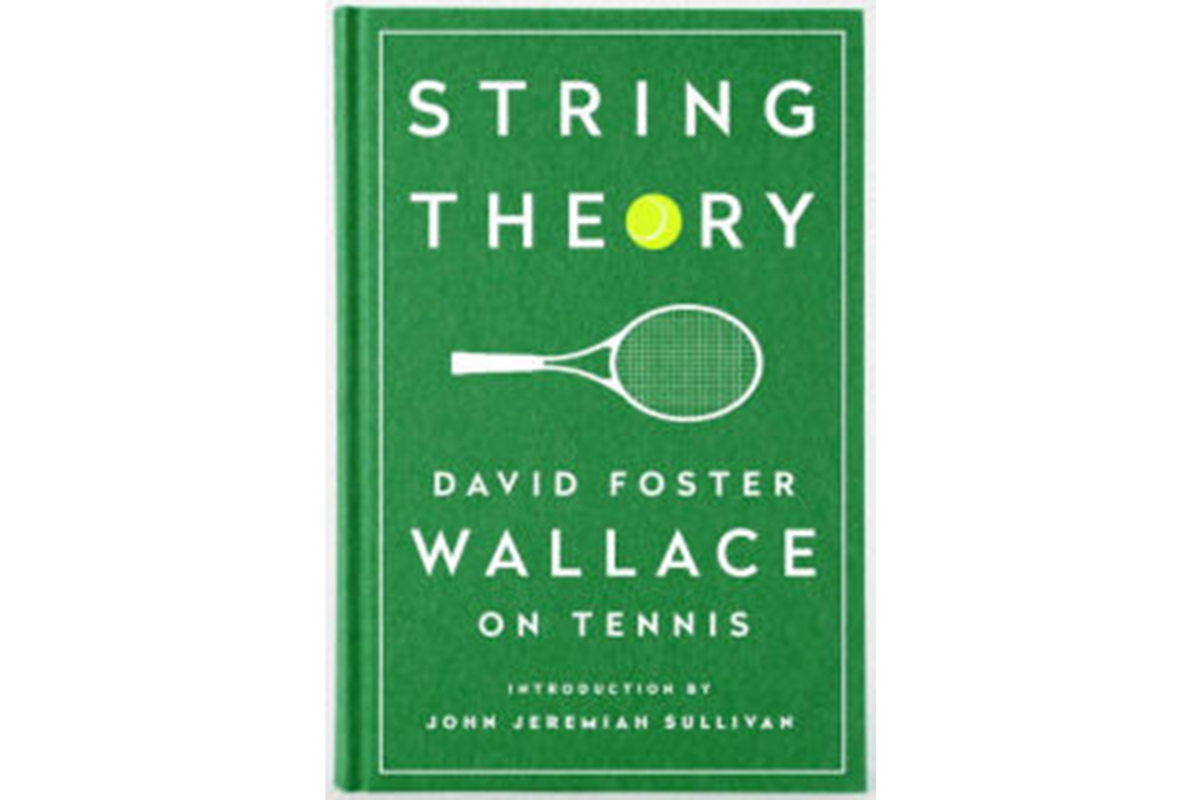'String Theory' gathers the brainy, witty tennis writing of David Foster Wallace
Loading...
Tennis, anyone? When the late novelist and enviably brilliant nonfiction hobbyist David Foster Wallace explores the sport, the answer is always going to be yes.
Here, then, in one of many brilliant asides from String Theory, Wallace’s slim collection of tennis profiles and tournament sketches, is how he describes John McEnroe: “At his peak (say 1980 to 1984), he was the greatest tennis player who ever lived – the most talented, the most beautiful, the most tormented: a genius. For me, watching McEnroe don a polyester blazer and do stiff lame truistic color commentary for TV is like watching Faulkner do a Gap ad.”
This kind of casual eloquence surfaces throughout this collection, published eight years after Wallace killed himself at age 46, following years of struggles with depression and addiction. As noted in the opening essay in "String Theory," during his early-teens, Wallace “was a near-great junior tennis player.”
Tennis, of course, is the subject of the five nonfiction pieces in String Theory” – and a junior tennis academy plays a prominent role in the epic 1996 novel “Infinite Jest,” considered by most critics and fans to be Wallace’s magnum opus. (Let’s be clear: I gleaned the basics of “Infinite Jest” by skimming appreciations and appraisals of Wallace and through my cowering, occasional bookstore perusals of a dozen or so pages that always end with a weary return to the shelf after marveling at the book's 1,100-page heft, filled with lengthy agate type footnotes and disquisitions.)
In other words, as has been stated by many others who know Wallace’s oeuvre better than this reader, tennis was a lifelong passion and obsession.
The essays and profiles in “String Theory” move from Wallace’s small-town Illinois junior-tennis career to his scathing review of the autobiography by former teen prodigy Tracy Austin, which somehow manages to be affectionate even while making obvious her book’s clumsy cliché- and platitude-mongering, to richly observed and reported stories on a near-great pro, life at the U.S. Open and, most famously, the majesty of Roger Federer at Wimbledon.
Like his fiction, or the sliver I know of it, anyway, Wallace can’t resist footnoting his way through all of these stories. These many (infinite?) digressions are mostly entertaining and interesting as the main text, though the constant back and forth can be taxing for readers.
Wallace was whip-smart and, while that mostly means delight for readers, at other times it can leave mere mortals such as this reader a bit woozy. In the first story, Wallace tells of his childhood and his youth tennis career while reflecting on the mathematical sureties of the sport that fascinated him.
The angles and parabolas and allusions to Cramer’s Rule (an efficient method of solving for a variable) and Euclid are charming and clever. Wallace describes the 78’ X 27’ dimensions of a court “with its slender rectangles of doubles alleys flanking its whole length” as, looking from above, “like a cardboard carton with flaps folded back.” OK, got it.
Soon after, Wallace tells of competitive tennis requiring geometric thinking.
“Because the expansion of response-possibilities is quadratic, you are required to think n shots ahead, where n is a hyperbolic function limited by the sinh of opponent’s talent and the cosh of the number of shots in the rally so far (roughly).” Um, tennis, anyone?
His observations of the difficulty and precision of top-level tennis resonate, as do his mentions of the endless commercialism of big-time sporting events and the idiosyncrasies of Pete Sampras’s service motion and other player personality quirks.
Though the Federer profile, written in 2006, is reliably judged by many to be Wallace’s best tennis story, a strong case could be made for his trip to the 1995 US Open (“Democracy and Commerce at the US Open”). Setting the scene for a match between Sampras and Mark Philippoussis, Wallace takes note of the players and their routines: “They sit in their little chairs hitting racket-faces together and cocking their heads to listen for pitch.”
And, touching on a recurrent theme of the US Open running through Labor Day weekend, Wallace makes note of the affluent fans filling the main stadium.
“In sum, the socioeconomic aura here for the day’s headline match is one of management rather than labor,” he sums up.
An obsessive’s penchant for detail serves reader and writer alike. We learn of the personality of the crowd, the endorsement-rich clothes worn by the players, the copious advertising and product placement throughout the Flushing Meadows tournament site and the entertaining backdrop provided by a blunt-spoken veteran ticket-taker.
Wallace describes the citizenry and couture characterizing each level of the stadium from the priciest seats near the court to the vertiginous upper deck housing the fans most likely to visit an Olive Garden without irony. Fitting that, since Wallace famously railed against irony’s corrosive effects.
What does the US Open look like? In 1995, Wallace reports, “The ushers are at their fat chains stretched across the Stadium tunnels, all wearing chinos and button-down shirts. The Security guys (all large and male, not a neck or a smile in sight) wear lemon-yellow knit shirts that do not flatter their guts. Chewing-gum seems to be part of Security’s issued equipment. The ballboys are in blue-and-white Fila....”
Wallace aficionados long ago embraced these scattered tennis writings, but they are unlikely to have any qualms about revisiting them. For the rest of us? This collection is a memorable introduction to taking flight with the soaring prose of the late DFW – and a convincing argument for what makes tennis intriguing.





